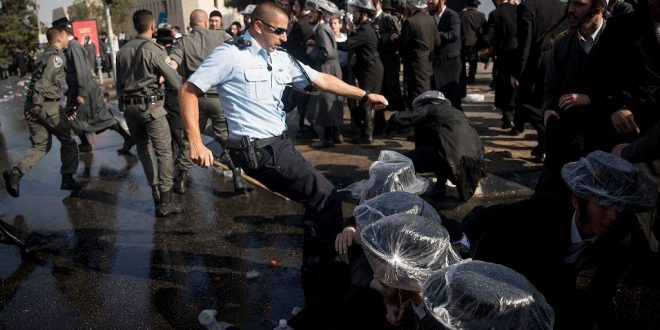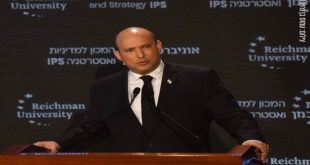Alwaght– Fragmentation and discrimination in the society are two major social crises the Israeli regime is grappling with. The crisis covers a wide range from discrimination between the Jews and Arabs, the disputes between the Eastern and Western Jews and between the secular and religious Jews, to the inter-Jewish friction between the Ashkenazis, Sephardics, and Mirzahis. All these social abrasions are root causes of existing instabilities in the Israeli community.
These contradictions rest in the name of the Israeli regime as a state while its people are in fact a population from other countries with conflicting cultures, languages, and ethnicities. The rise of what is now called Israeli population is not a process happened over ages. Rather, it was a relatively snap process took place according to a comprehensive Zionist plan to bring Jews from other parts of the world and settle them in occupied Palestinian territories.
The Israeli regime, which has not gone the long way of the nation-building process, compiled a nation with clashing norms, values, and cultures. This was majorly a legacy of the Western colonialism which when decided to form an all-Jewish state in Palestine took two steps: First, terrorizing, slaughtering Palestinians and dislodging them from their motherland. Second, bringing, and in many cases forcing, Jews from across the world into Palestine. The colonial powers took pains to sent as many Jews as possible to the occupied territories. The result was a community extremely non-homogenous culturally, socially, politically, and economically.
In other words, the migrant Jews were, although unconsciously, categorized socially and politically. The European Jews filled the high social ranks while the Africans came in the bottom of a forged nation, triggering the crisis of an automatically categorized society. To see how these chasms affect the Israeli future, we need to give a picture of the deep fragmentation between various social groups which developed to be an active fault line in the Israeli regime at the time being.
Partitions in the Israeli society come in three social, religious, and political levels. Social splits are deeper and bear more risks than the others two to the Israeli stability. They effectively impact the economic and political structures, which in fact can build grounds for newer cracks in other areas.
The initial sparks of fragmentation took place since the modern-day migration of the Jews to Palestine from 1881-1883. During these years, the Jewish community in Palestine grew to 34,000 people or 5 percent of the Palestinian population. Up to 1948, the year the Israeli regime creation was declared, their population nearly touched 1 million, or 86 percent of the Palestine inhabitants. Up to 2016, Tel Aviv brought in some 6.4 million Jews to the occupied lands. The migrant Jews had to share territories with the Arabs.
But between 2009 and 2015, to the Israeli leaders’ frustration, something went wrong. According to the Israel Central Bureau of Statistics for the first time since the Israel regime’s existence, reverse migration happened, with the number of incoming Jews being less than those outgoing. This was the first signal that a forged nation is hard to build and that cultural and political non-homogeneity foils such efforts, especially when it is flavored by discrimination.
Beside the Jewish-Arab divisions, there are some others, mainly between the European, American and the Africans Jews. The insistence to preserve the miniature, localized identity set up obstacles ahead of the composition of a cohesive national identity, hence leaving the immature national security at stake. Add to this a variety of racial, ethnic, and civilizational identities.
Culturally and racially, the Israeli Jews are recognized by three major identities, each having their own sub-cultures. The European or Ashkenazi, Middle Eastern or Saphardi, and “Saberi” identity which refers to those born in the Israeli regime.
This population makeup with the contradicting segments forming it is a problem to a well-defined collective Jewish identification. Talking of inequities, the Sephardics, for example, are in a lower status culturally and economically than the Ashkenazis. Their religious conservatism is higher, however. This group, not victims of inequity in their home countries and not parties to the creation of the Israeli regime, fall victim to racial discrimination of the Western Jews. The Sabra generation, Israel-born Jews who are also called new Jews, are in higher scientific and education levels in comparison to the other two. They manage the major apparatuses like the military, universities, businesses, and industries.
Despite the Israeli leaders’ efforts to homogenize the deeply fragmented identities under the umbrella of a state, Tel Aviv remains unsuccessful in its mission and identity, political, and social crises remain a thorn in the side of Zionism ideal to build a nation-state. The social chasms are so wide that they can pose off-the-peg future troubles. Social splits undoubtedly yield political ones, represented by parties with extremely opposite mindsets.
The Israeli society is an archetype of a migrant-formed nation where the European and Eastern migrants are in a never-ending race. This issue is well damaging to the Israeli security. Another issue mirroring the deep gaps is dividing the population into the Jewish and Palestinian poles. This policy, devised to easily control the two groups, bears fundamental challenges to the Israeli society, paving the way for a sense of identitylessness, political divergence, and fragile geographical ground.
The recent years’ religious and ethnic protests carry a clear substantiation for this claim. The fact is that the Israeli society is suffering from a firm lack of identity, the divergence in it came to a head in post-Zionism period, and all those put the Israeli grassroots on a shaky geographical ground.
The resultant risks endanger the very existence of the Israeli regime. The gaps and disputes, which are far from being presently silent, are the fire under the ashes, ready to ignite anytime. As a conclusion, a more cohesive Palestinian identity will certainly close the door to the formation of an Israeli national identity, something inflicting identity crisis on the Israeli regime. As the gaps grow broader in this fake state, risks of from-within-collapse grow bigger.
 WILAYAH NEWS VOICE OF THE GLOBAL AWAKENING
WILAYAH NEWS VOICE OF THE GLOBAL AWAKENING






